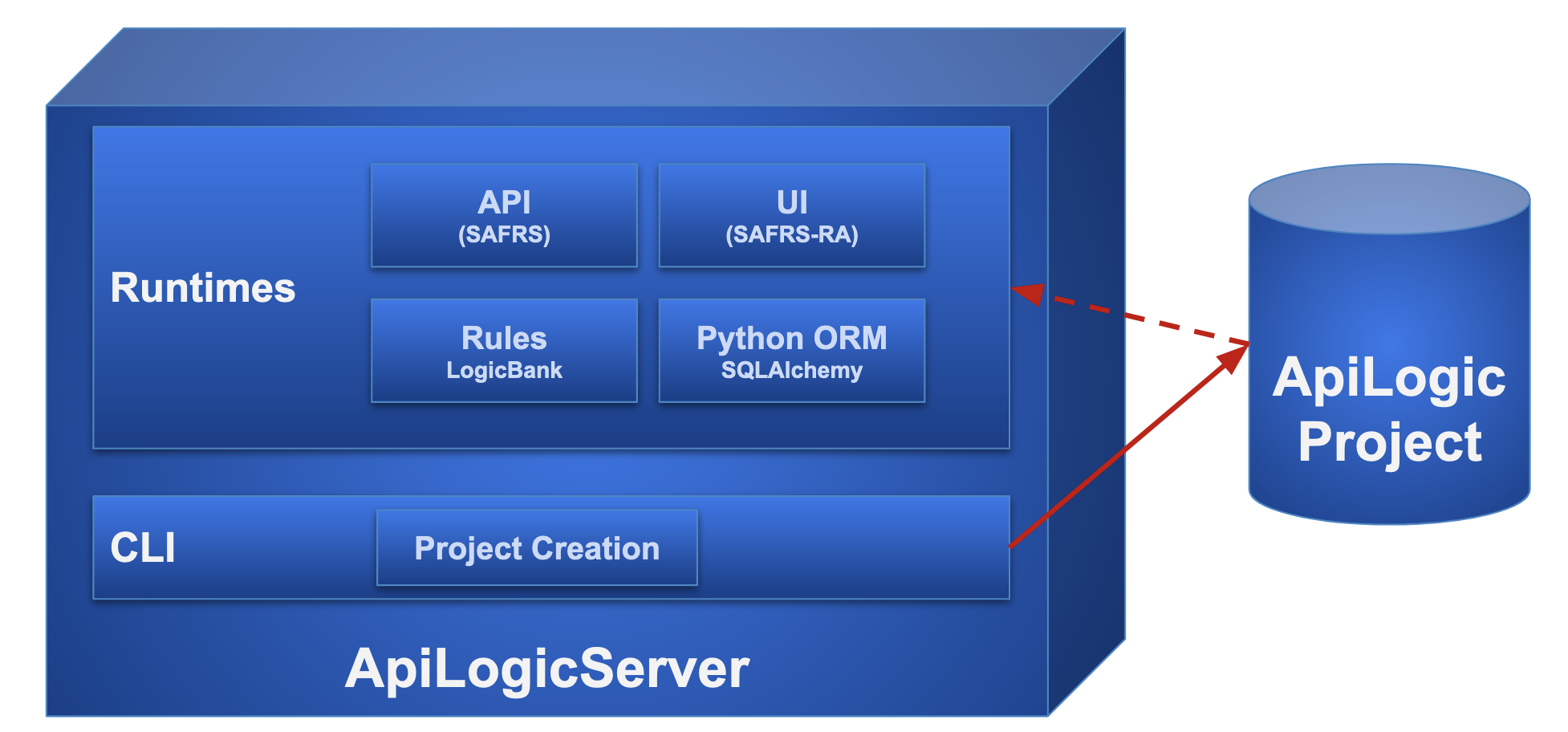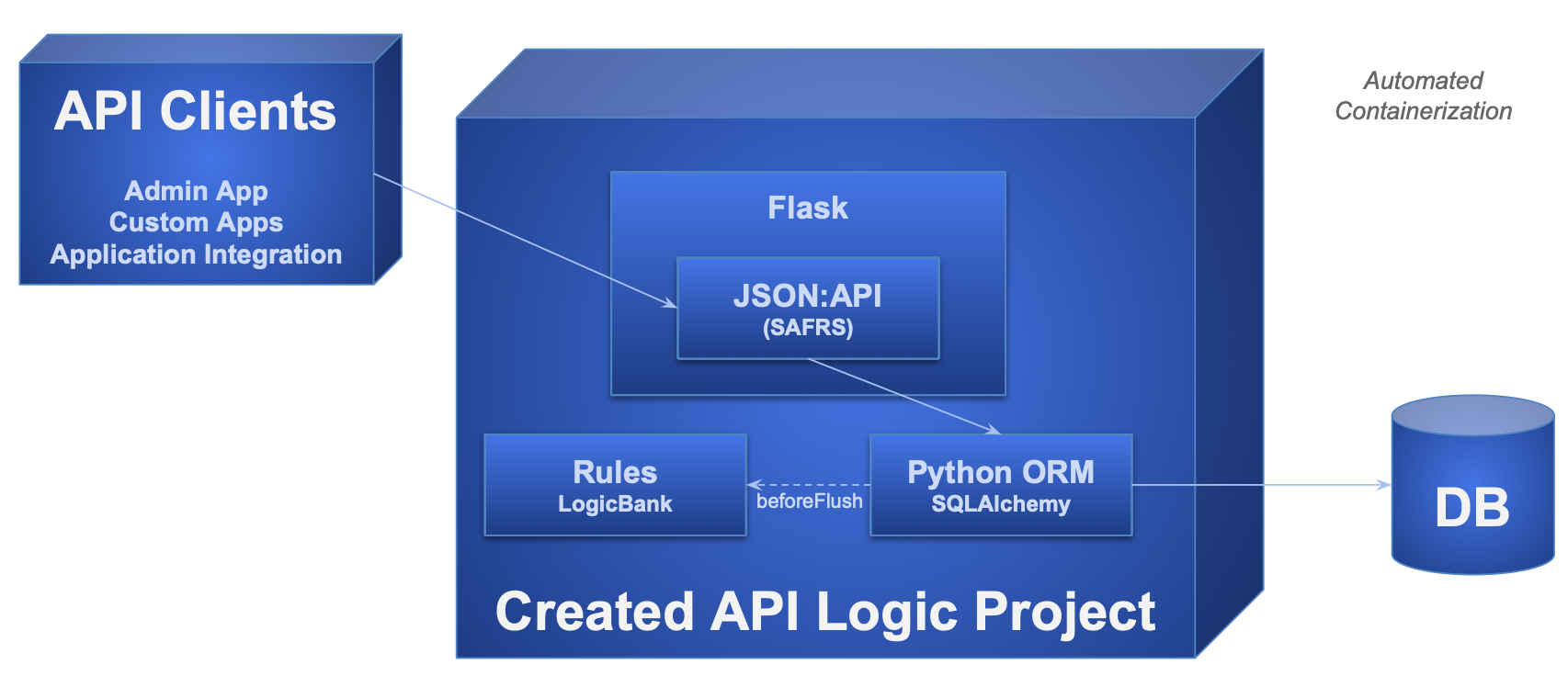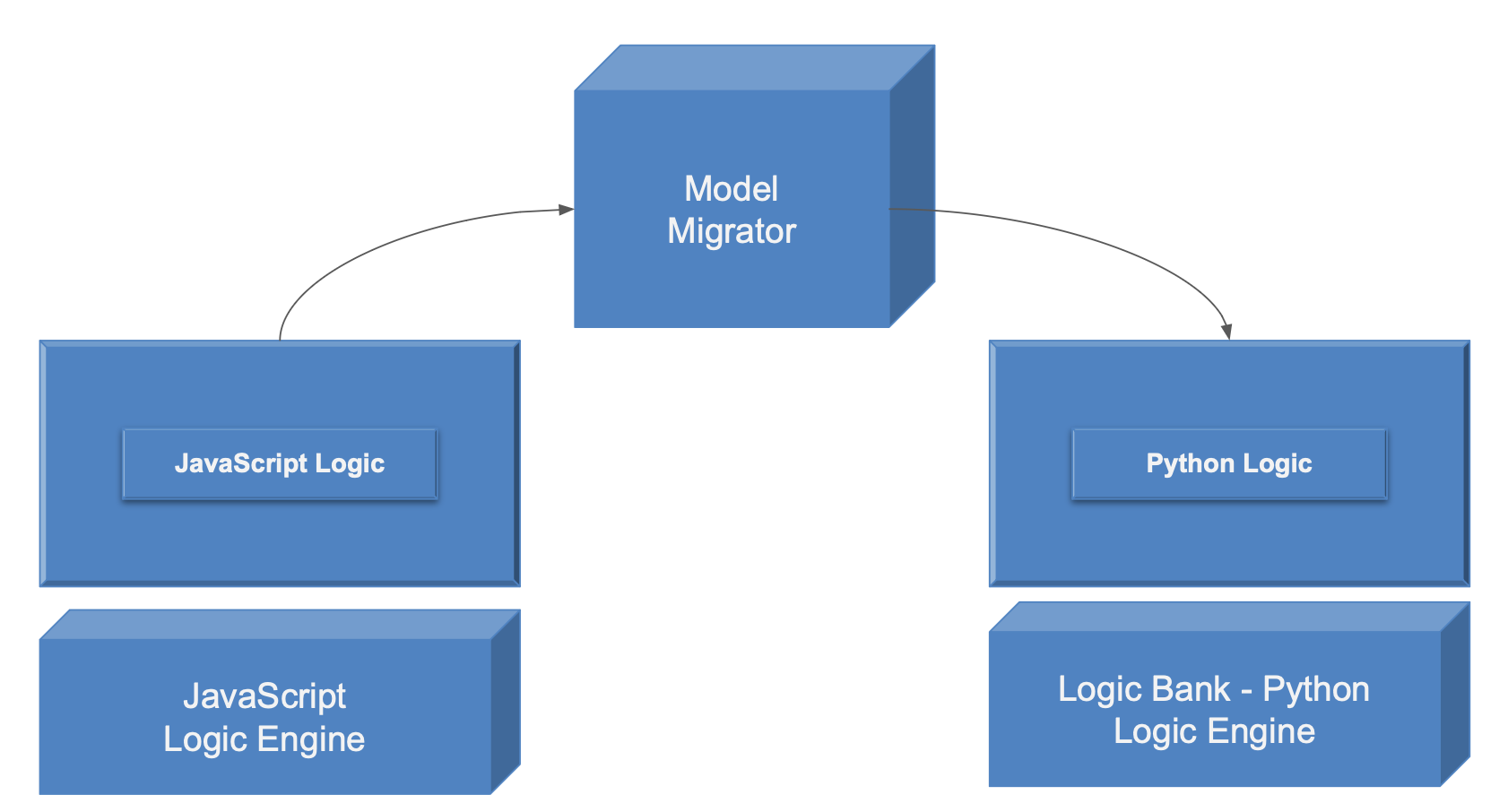What is API Logic Server

Deployment Architecture
- A modern 3-tiered architecture, accessed by APIs
- Logic is automatically reused, factored out of web apps and custom services
- Containerized for scalable cloud deployment - the project includes a dockerfile to containerize it to DockerHub.
Development Architecture
- Installed as Docker,
pip, or use Codespaces - Standards-based customization - debug in a standard IDE (VSCode, PyCharm), using standard packages (Flask, SQLAlchemy)
Runtimes and CLI
API Logic Server is a Python Application, consisting of:
- Runtimes for ApiLogicProject execution (see below)
- CLI (Command Language Interface - provides
ApiLogicServer create…`)
It executes either as a locally install (venv), or a Docker image (which includes Python). In either case, the contents are the same:

Key Runtime Components

The following
| Component | Provides |
|---|---|
| Flask | enables you to write custom web apps, and custom api end points |
| SQLAlchemy | Python-friendly ORM (analogous to Hiberate, JPA) |
| Logic Bank | Listens for SQLAlchemy updates, provides Multi-Table Derivations and Constraint Rules Python Events (e.g., send mail, message) Customizable with Python |
| SAFRS | JSON:API and swagger, based on SQLAlchemy |
| SAFRS-RA | Admin App, using SAFRS |
Model Execution Engines
When you create a project (als create or als genai), the system creates models shown below. These model files are "executed" by the corresponding Model Execution Engines, as noted.

This model driven approach has substantial advantages, as described below.
Maintainable
In traditional framework-based implementations, the amount of code required is massive. The last thing you want to take a high level of abstraction turned into low level code you need to understand and maintain.
By contrast, the models above are concise and clear. They are declarative: they state what is to be done, not how:
-
the rules are 40X more concise than code
-
for APIs, just the line
api.expose_object(database.models.Categoryrepresents multiple verbs -- and the swagger -
for apps, you just list the attributes; JavaScript and HTML would be massive (and unitelligable to most).
By way of analogy, you would not want a compiler to generate machine code, and then have to maintain the machine code.
Platform Independent
Given rapid technology advancement, it is strategic advantage to preserve IT investment over such change. This enables organizations to take advantage of new languages, new architectures, etc. That has simply impossible in the past - existing procedural systems are necessarilty technology-dependent.
By contrast, the models are architecture-independant. For example, the rule Derive the Customer.Balance as sum(Orders where Date_shipped is None) is architecture neutral. So, it can be translated into different languages and architectures.
This is not a thoeretical proposition. In fact, past implementations of this techology have proved the migration:
-
from minicomputers, to Visual Basic, to J2EE
-
from JavaScript to Python
As shown below, your investment is preserved with a Model Migrator, and a Logic Engine. The Logic Engine provides the ordering, optimizations and data access (possibly using an ORM) for logic execution.

Execution: 3-tiered architecture
The API Logic Server executes as an application server, accessed by an API, in a standard 3-tiered architecture.
Observe that logic plugs into SQLAlchemy. Logic is thus automatically shared (factored out) of custom services, and web or browser-based apps.
In most cases, the API Logic Server executes in a container, so scales horizontally like any other Flask-based server.
